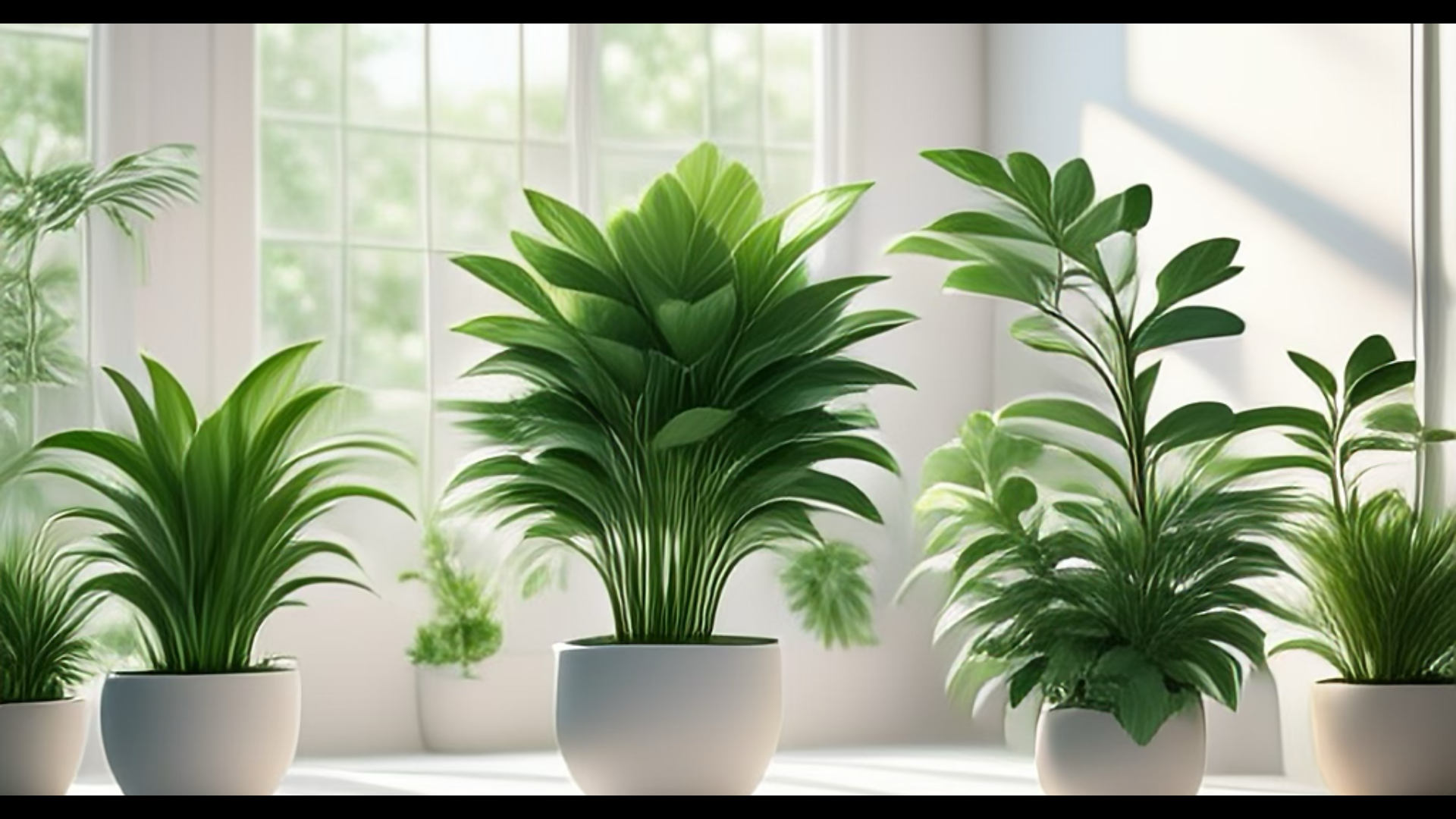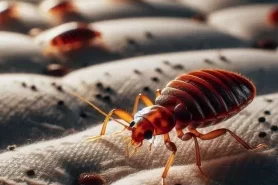If you’ve ever battled with unwanted pests in your home, you know how frustrating it can be. The thought of using harsh chemicals to get rid of bugs might not sit well with you. That’s where natural pest repellents come in! Nature has provided us with an array of plants that can help keep those pesky insects at bay, without the need for chemicals. So, if you’re looking for a more eco-friendly solution, why not try adding some insect-repelling plants to your home? Not only will these plants freshen up your space, but they’ll also work double-duty by keeping bugs away.
Here are six household plants that act as natural pest repellents. These plants are easy to care for and can provide a natural, chemical-free solution for pest control.
Lavender: The Sweet-Scented Bug Buster

Lavender isn’t just beautiful to look at or pleasant to smell—it’s also an excellent natural pest repellent. The strong scent of lavender is known to repel mosquitoes, flies, moths, and even fleas. While we find the fragrance soothing, many insects, especially mosquitoes, find it overwhelming and steer clear of it. You can place a potted lavender plant on your windowsill or hang a bundle of dried lavender in your closet to ward off moths.
To use lavender as a natural pest repellent, try making your own homemade lavender spray by boiling lavender buds and mixing the water with a bit of rubbing alcohol. Spray this around your home, and you’ll not only have a lovely fragrance but also keep pests at bay. Plus, it’s a great way to naturally freshen up your space without the need for store-bought air fresheners that often contain harmful chemicals.
Mint: A Multipurpose Marvel

Mint is a plant that’s famous for its pleasant aroma, but did you know it’s also a fantastic natural pest repellent? The strong smell of mint is known to repel ants, mosquitoes, spiders, and even mice. Simply place a few mint plants in areas where you tend to notice insects, like the kitchen or near windows. The scent of mint will discourage pests from hanging around.
In addition to being an insect repellent, mint can be used to make refreshing tea or added to a variety of dishes for a burst of flavor. If you’re worried about mint spreading too quickly, you can grow it in a container to keep it contained. And if you want an extra layer of protection, rub a few mint leaves along window sills and door frames. It’s a quick, natural way to keep bugs from getting inside your home
Citronella: The Classic Mosquito Repellent

When it comes to natural pest repellents, citronella is a well-known name. This plant has a strong lemon scent that’s highly effective at repelling mosquitoes, flies, and other biting insects. Citronella is commonly used in candles and sprays, but having a few citronella plants around your yard or patio can also help keep insects away naturally.
Citronella grass is easy to grow in pots or directly in the ground, but it does require plenty of sunlight and warm temperatures. If you’re looking for a natural way to prevent mosquito bites while you enjoy time outdoors, try growing citronella near your patio or along walkways. It’s a great alternative to mosquito coils that can be harmful to your health.
Basil: A Kitchen Hero That Keeps Bugs Away

Basil is not only a flavorful herb that adds a fresh touch to many dishes, but it’s also an effective insect repellent. The strong scent of basil is known to deter mosquitoes, houseflies, and even aphids. If you love to cook with basil, you can grow it on your windowsill or in your kitchen so you have easy access to fresh leaves while simultaneously keeping pests at bay.
To use basil as a natural pest repellent, you can place potted plants near doors and windows, or simply crush a few basil leaves and rub them on your skin. It’s an excellent way to repel mosquitoes and keep your kitchen bug-free. Plus, basil is a versatile herb that can be used in everything from pesto to pasta, making it a great addition to any home.
Rosemary: More Than Just a Herb for Cooking

Rosemary isn’t just for adding flavor to your favorite dishes; it’s also an excellent natural pest repellent. The strong aroma of rosemary is known to repel mosquitoes, flies, and even some types of beetles. If you love to cook with rosemary, consider growing it indoors in a pot near a sunny window, and it will serve a dual purpose: acting as both a flavorful herb and an insect repellent.
In addition to its culinary uses, rosemary can be used in homemade sprays or sachets to keep pests away. Simply add a few sprigs of fresh rosemary to a pot of boiling water and let it steep for a while, then use the infused water in a spray bottle to target areas where pests are a problem. It’s a simple, natural way to eliminate insects without resorting to chemical-based solutions.
Chrysanthemums: Beautiful Blooms That Double as Pest Control
Chrysanthemums are stunning flowers that not only brighten up any room but also work as natural pest repellents. They contain a natural compound called pyrethrum, which is toxic to insects but harmless to humans and pets. This makes chrysanthemums a great way to keep pests like ants, cockroaches, fleas, and mosquitoes at bay.

The great thing about chrysanthemums is that they don’t just repel pests when they’re fresh. You can dry the flowers and use them in potpourri or place them around your home to continue to ward off insects. If you have a garden, planting chrysanthemums can help protect your outdoor space as well. You can even create your own insect-repelling solution by steeping chrysanthemums in water, which can then be sprayed around your home.
How to Make the Most of Your Natural Pest Repellents
Now that you know which plants can help keep pests at bay, you might be wondering how to best use them. Here are a few tips on making the most of these natural pest repellents:
– Place plants near entry points: Keep plants like mint, citronella, and lavender near windows, doors, and other entry points to create a natural barrier against insects.
– Use plants as décor: Incorporate pest-repelling plants into your home décor. Not only will they look great, but they’ll also help keep your space bug-free.
– Make homemade sprays: You can make your own pest-repellent sprays using herbs like rosemary, lavender, and basil. Simply steep the plants in hot water, let it cool, and transfer it to a spray bottle.
– Combine plants for maximum effect: You don’t have to rely on just one plant—use a combination of insect-repelling plants to increase the chances of keeping pests away from your home.
By bringing these plants into your home or garden, you’re not only adding beauty and fragrance, but you’re also helping create a natural, chemical-free way to repel insects. Whether you’re dealing with mosquitoes, flies, ants, or fleas, these plants will do the job and keep your space pest-free.
Final Thoughts
Using natural pest repellents like household plants is a simple and effective way to keep your home free from bugs. Plus, you get the added benefits of fresh air and lovely scents. These plants are a safer, eco-friendly alternative to chemicals and can easily become part of your daily routine. So, next time you’re looking for a way to keep insects at bay, you can turn to nature and let these six household plants do the work for you. For more information on how Paladin Pest Solutions can help you with green options visit us today.




